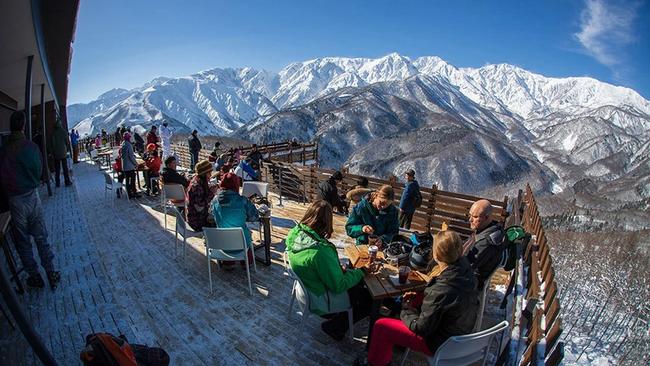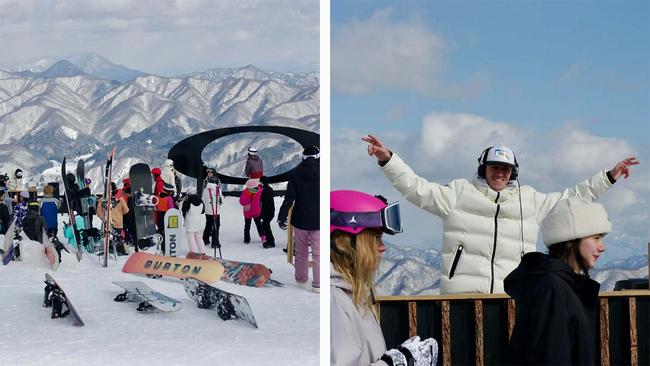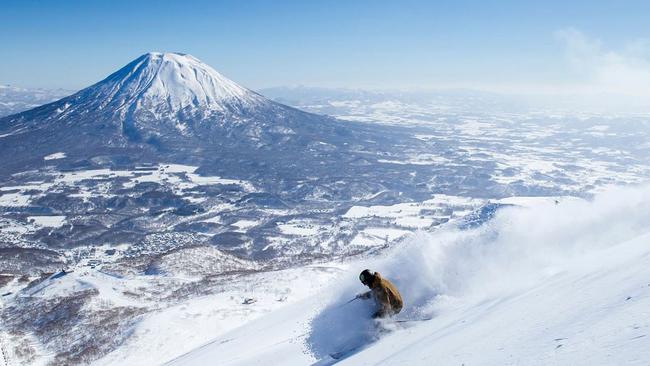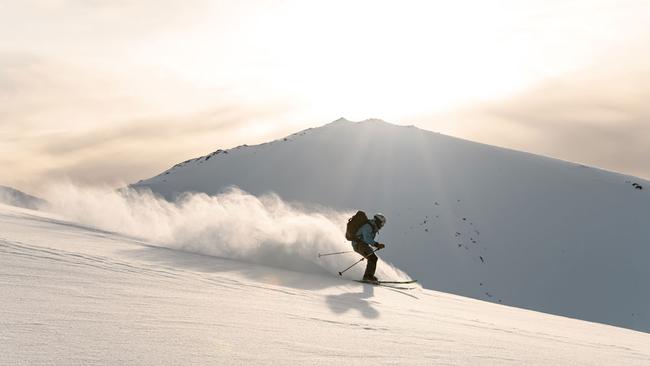
Hakuba
Generally perceived as a lower cost ski destination, Hakuba Valley comprises ten resorts in Nagano prefecture, such as Happo One, Hakuba 47, Goryu, Iimori, Iwatake, Norikura and Cortina.

They’re two of Japan’s most loved ski resorts. So how do they compare? We click our skis on and put them to the test.

Generally perceived as a lower cost ski destination, Hakuba Valley comprises ten resorts in Nagano prefecture, such as Happo One, Hakuba 47, Goryu, Iimori, Iwatake, Norikura and Cortina.

To reach the mountains, travellers get the shinkansen from Tokyo Station to Nagano Station, which takes under two hours. From there, it’s around an hour (or more) on a bus to the various villages within Hakuba.
See also: Hotel review: The Tokyo Station Hotel, Japan
There are no flights to Hakuba, which can be off-putting for some. It's an easy journey for groups and families with teens, but it may be arduous for those with children under four. Likewise, catching the train with ski bags and heavy luggage can be stressful, so make sure you give yourself plenty of time.

There are a handful of three-star resorts in Happo One and Echoland, Hakuba’s buzziest villages, but the accommodation is generally more authentic Japanese homestay and ryokan-style B&Bs.
I stayed at the Aussie-owned Iimori Vista, near quiet Goryu, which can be booked on Booking.com, and has a warm feel, uber-family vibe (young kids reside at the hotel) and communal spaces, albeit the bathrooms are shared. Next time, I’d stay in Happo One within walking distance to the slopes and action. Many of the stays, including Iimori Vista, offer a shuttle into the resorts and back every morning and afternoon. There are Ubers and taxis in Hakuba, but it can be tricky getting around.
Picture: Hakuba Valley

Hakuba isn’t a ski-in-ski-out destination. You really need a car to easily access each of the resorts here, as the only mountains interconnected by lifts are Goryu and Hakuba 47, so they feel fragmented and hard to reach. There is a shuttle bus system between them, but it feels like too much of an effort for our short stay. After our first morning checking out Goryu and Hakuba 47, we get stuck at the base and catch a $50 taxi to Happo One, which has some meandering, panoramic runs and fun long red runs. Happo One has 16 courses, as well as spots to eat and drink at the base and on-mountain, such as the Oakley Terrace (Diplo famously played here).
Picture via Instagram (@oakley_terracebar.happoone)

Epic Pass holders will be stoked to know Hakuba Valley is part of the Epic Pass. Lift passes are pretty good value too, with a one-day pass including access to each of the Hakuba Valley resorts priced $101 for adults and $59 for a child.
You’re spoilt for choice when it comes to ski hire. Rhythm Japan offers a pick-up and drop-off service, and the premium gear rides like a dream. However, a mix-up on the first day of hire meant they collected my gear from my accommodation the same day I rented it and so I had to go back the next morning and get fitted again.

The rustic food truck area at the base of Happo One was the highlight, with friendly vendors selling affordable local bites such as gyoza (12 for $12) and $10 hot sake. Unless you’re staying in Happo One or Echoland, be prepared to walk or get a taxi to restaurants. Bookings are recommended, including at sultry Hybrid, a must for the maguro ceviche with seaweed crackers and the meltiest wagyu in the world. Stop into the Rabbit Hole and Blizzard for margs on the way.

Niseko is the queen bee of Japan’s ski fields. Hokkaido’s most famous ski resort is popular with Aussies and Americans and is made up of four interlinked ski resorts, including Grand Hirafu, Hanazono, Niseko Village and Annupuri, with a fifth currently in the pipelines.

It's an easy 90-minute flight from Tokyo to Sapporo, then a nearly three-hour bus journey from Sapporo to Niseko.
The flight to Sapporo is the easy bit. The three-hour bus ride just feels that tad too long, however there is a toilet stop and it’s a stress-free way to get there.

It's a glam mix of luxury ski-in, ski-out resorts, four-and-five-star hotels, and self-contained accommodation. Stays here tend to be at the pricier end of the scale, especially during peak winter season.
I’m holed up in a lush, two-bedroom residence at Intuition Niseko, which isn’t ski-in, ski-out, but it almost is – we ski almost to the road of the carpark at the hotel opposite and it’s a short walk from there. Unless you’re staying within walking distance of Grand Hirafu, you’ll need to rely on shuttle buses or a car to get around. The good thing about Niseko is that everything is pretty much concentrated in this this one village.

This is Niseko’s enduring allure. The four interlinked resorts make it seem like you
have endless reign of the mountains, and it’s near-impossible to get bored. There are some excellent off-piste and backcountry opportunities, as well as tree runs.
The ‘POW’ in Niseko is world-famous. Hence why its gets so busy. This year there were long queues for the gondolas during heavy snowfall days and when one of major lift closes, such as Hanazono, it can be limiting. But on a bluebird day, when there are clear vistas of Mt Yotei volcano, there really is no better place to be. Hanazono, with its warmed chair lift and First Tracks experience, is a personal favourite.

Niseko is affiliated with IKON Pass and passholders can get a 25 percent discount on ski lift passes to each of the individual mountains for family and friends. The current price for an all-mountain one-day pass for an adult is $110 (seniors above 65 pay $93), while for kids aged between 4 and 12 its $66.
The excellent ski hire experience at Rhythm Japan in Grand Hirafu was in sharp contrast to that in Hakuba, with staff genuinely helpful and knowledgeable about the fit of the boots and skis. Not having to return them to the shop (you use a QR code to alert them of the return), is a gamechanger.

The cute Hana1 Café at Hanazono selling hot toddies, champagne and Bloody Marys was a big hit, but there seemed to be a wait for everything wherever you went.
When I visited, every on-mountain option in Niseko was teeming with people and it was difficult to find a spare seat or table.
Niseko has some excellent restaurants and bars, including fridge bar Bar Gyu (again, you’ll need to queue), and Michelin-famed omakase chain Sushi Azabu, but bookings are essential. I guess that’s why Grand Hirafu’s central konbini Seico Mart is always heaving.
Picture: Hanazono Niseko

Niseko has the better terrain and ease of accessibility but more crowds; Hakuba has better on-mountain food and a more local, affordable and authentic vibe, but it’s harder to get around. It’s not an easy choice, but whichever you choose, you won’t be disappointed.
This writer travelled with the assistance of Jetstar, The Luxe Nomad, Nisade, Niseko, United, Hakuba Valley and Booking.com.